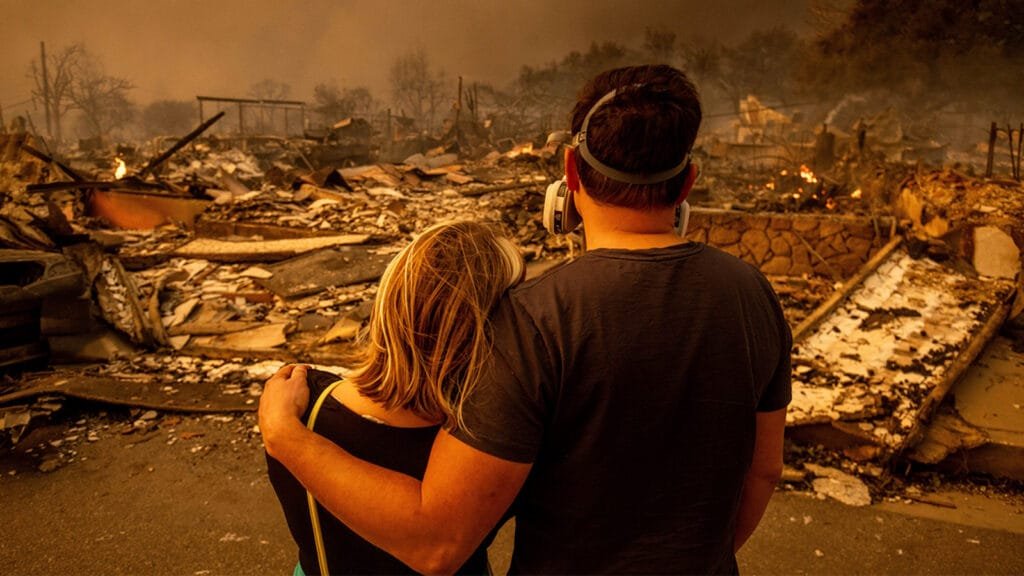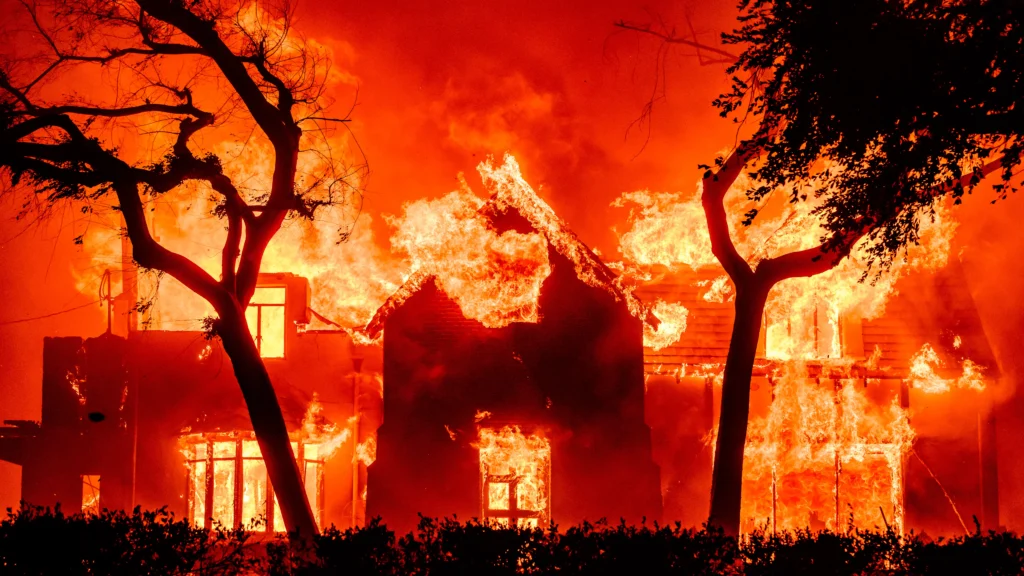Wildfires have become a devastatingly regular occurrence in California, with entire neighborhoods reduced to ashes in mere hours.
The current tragedy in Los Angeles underscores a crucial question: why are so many homes in fire-prone areas constructed with flammable materials like wood?
More importantly, what can be done to build homes that stand resilient against these natural disasters?
The answers to these questions could save billions in property damage, spare countless families emotional turmoil, and protect lives.

Here are the Top 10 Actions Builders in California Can Take to design and construct fire-resistant homes:
Take Charge of Your Finances Today! Download Our FREE Guide
"5 SIMPLE STEPS to TAKE CONTROL OF YOUR FINANCES"
1. Use Non-Combustible Building Materials
- Replace wood framing and siding with materials like concrete, steel, or brick. Fiber-cement siding, fire-rated gypsum boards, and autoclaved aerated concrete (AAC) are excellent options.
- Metal or tile roofing materials can provide additional resistance compared to wood shakes or asphalt shingles.
2. Incorporate Fire-Resistant Insulation
- Choose non-flammable insulation materials such as mineral wool or fiberglass. These materials not only resist fire but also reduce the risk of fire spreading through walls or attics.
3. Fireproof Exterior Design
- Eliminate design features that can trap embers, such as open eaves, decks, and attics with exposed vents.
- Opt for seamless roofs and enclosed soffits to prevent embers from lodging in vulnerable areas.
4. Install Fire-Resistant Windows and Doors
- Use double-paned or tempered glass for windows. These types of glass can better withstand high temperatures and resist breaking during a fire.
- Doors should be made of non-combustible materials such as metal or solid-core wood with fire-rated seals.
5. Create Defensible Space
- Landscaping plays a vital role in fire prevention. Keep flammable vegetation at least 30 feet away from structures.
- Use fire-resistant plants, gravel, and hardscaping to reduce the risk of fire spreading to homes.
6. Install Automatic Fire Suppression Systems
- Equip homes with sprinkler systems both indoors and outdoors. Exterior sprinklers can wet roofs and surrounding areas during a wildfire, reducing the chance of ignition.
7. Use Fire-Resistant Paints and Coatings
- Apply fire-retardant paints or coatings to wood and other combustible surfaces. These coatings can significantly slow down the spread of fire.
8. Elevate Building Codes in Fire Zones
- Push for stricter enforcement of wildfire-specific building codes. Ensure homes in high-risk areas comply with the latest standards, including Chapter 7A of the California Building Code.
9. Emphasize Modular and Prefabricated Fire-Resistant Homes
- Prefabricated homes built from fire-resistant materials can be a cost-effective and sustainable solution for fire-prone areas.
10. Promote Community-Level Fire Mitigation Plans
- Builders and developers should collaborate with local authorities and homeowners to create community-wide firebreaks, water sources for firefighting, and evacuation routes.

The Benefits of Building Fire-Resilient Homes
- Time Savings: Homes designed to withstand wildfires require less frequent rebuilding, saving time and effort after disasters.
- Emotional Relief: Fireproof construction can provide peace of mind for families, knowing their homes are safer.
- Cost Efficiency: While fire-resistant materials and designs may have higher upfront costs, they can drastically reduce long-term expenses related to repairs, insurance premiums, and rebuilding.
The Path Forward
By prioritizing fire-resistant construction practices, California can lead the way in disaster-resilient housing. Builders, policymakers, and homeowners all have a role to play in creating a future where homes remain standing, even in the face of wildfires.
The tragic fires in Los Angeles should serve as a turning point. It’s time to rethink how we build in fire-prone areas and adopt innovative solutions that protect both lives and properties. The actions we take today will determine how resilient our communities will be tomorrow.

Charles Bivona Jr aka “Coach JP Money”, is the founder of Coach JP Money. He is a seasoned expert in financial coaching and wealth-building. A multifaceted visionary, Charles is also a writer, global citizen, eco-activist, musician, artist, entertainer, entrepreneur, investor, life coach, and syndicated columnist.
Charles’ journey began with a solid education in accounting, finance, and business at the University of Nevada, Las Vegas, and California State University, Fullerton. At just 17, he made his first real estate investment with no money down, igniting a lifelong passion for financial independence. By 1998, he had achieved debt-free status and has been building wealth ever since.
As an entrepreneur, Charles owned and operated five national newspapers in the U.S. before transitioning to digital media. He founded and managed influential online platforms, including HireVeterans.com (2004–2020) and VT Foreign Policy (2004–2023).
A proud expat since the late 1990s, Charles resides in Baja, Mexico, with his wife whom he married in 1985. Together, they have three adult children and seven grandchildren. Their eco-conscious home, built with sustainable super-adobe techniques, is now a luxury retreat known as Hacienda Eco-Domes.
Under his music alias Johnny Punish, a name coined during his days fronting the underground punk band Twisted Nixon, he continues to inspire through his art and advocacy through his newest musical adventure; Punish Studios.
Today, as “Coach JP Money” Charles dedicates his life to helping others achieve financial mastery and personal success, sharing decades of experience and wisdom through his coaching, writing, and creative endeavors.
Read the full bio at PunishStudios.com >>>











